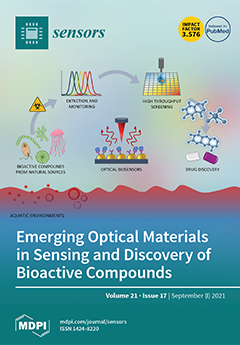The new smart insole PODOSmart
®, is introduced as a new tool for gait analysis against high cost laboratory based equipment. PODOSmart
® system measures walking profile and gait variables in real life conditions. PODOSmart
® insoles consists of wireless sensors, can
[...] Read more.
The new smart insole PODOSmart
®, is introduced as a new tool for gait analysis against high cost laboratory based equipment. PODOSmart
® system measures walking profile and gait variables in real life conditions. PODOSmart
® insoles consists of wireless sensors, can be fitted into any shoe and offer the ability to measure spatial, temporal, and kinematic gait parameters. The intelligent insoles feature several sensors that detect and capture foot movements and a microprocessor that calculates gait related biomechanical data. Gait analysis results are presented in PODOSmart
® platform. This study aims to present the characteristics of this tool and to validate it comparing with a stereophotogrammetry-based system. Validation was performed by gait analysis for eleven healthy individuals on a six-meters walkway using both PODOSmart
® and Vicon system. Intraclass correlation coefficients (ICC) were calculated for gait parameters. ICC for the validation ranged from 0.313 to 0.990 in gait parameters. The highest ICC was observed in cadence, circumduction, walking speed, stride length and stride duration. PODOSmart
® is a valid tool for gait analysis compared to the gold standard Vicon. As PODOSmart
®, is a portable gait analysis tool with an affordable cost it can be a useful novel tool for gait analysis in healthy and pathological population.
Full article






